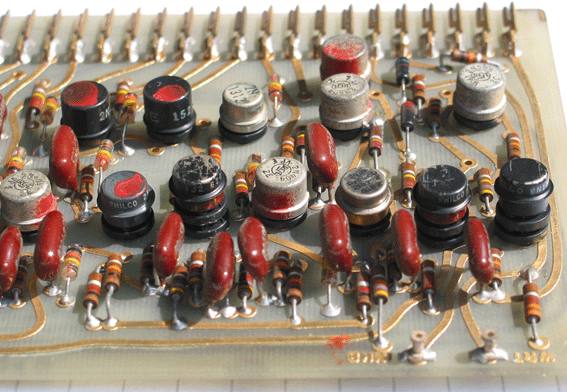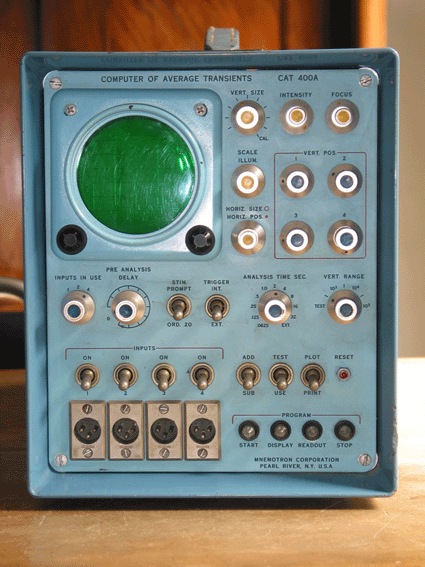Mnemotron Computer of Average Transients
UvA Computer Museum catalogue nr 04.25

This instrument, built by TMC (Technical Measurement Corporation), Connecticut, USA, is a fine example of the use of computer technology before the advent of general-purpose laboratory (mini)computers. It used discrete germanium transistors and core memory. For the price of the machine one could easily buy a middle class house in those days...
After cleaning and restoration into its original state, the instrument seems to be in generally good condition. There is a problem with the insulation of the CRT high tension wiring becoming sticky. On the long run, the softening agent liberated from the plastic insulation may affect other components (see also our troubles in conservation section).
This CAT was purchased and used by the Laboratory of Medical Physics, University of Amsterdam. After becoming obsolete it served some time at the Physics Lab for medicine students. Thanks to Piet Boon and Paul Vlaanderen, for saving the CAT from being scrapped. A set of manuals was contributed by Bob Rosenbloom.
Matt Baum, who was involved with the development of the CAT as a chief engineer, kindly provided a set of circuit diagrams.


